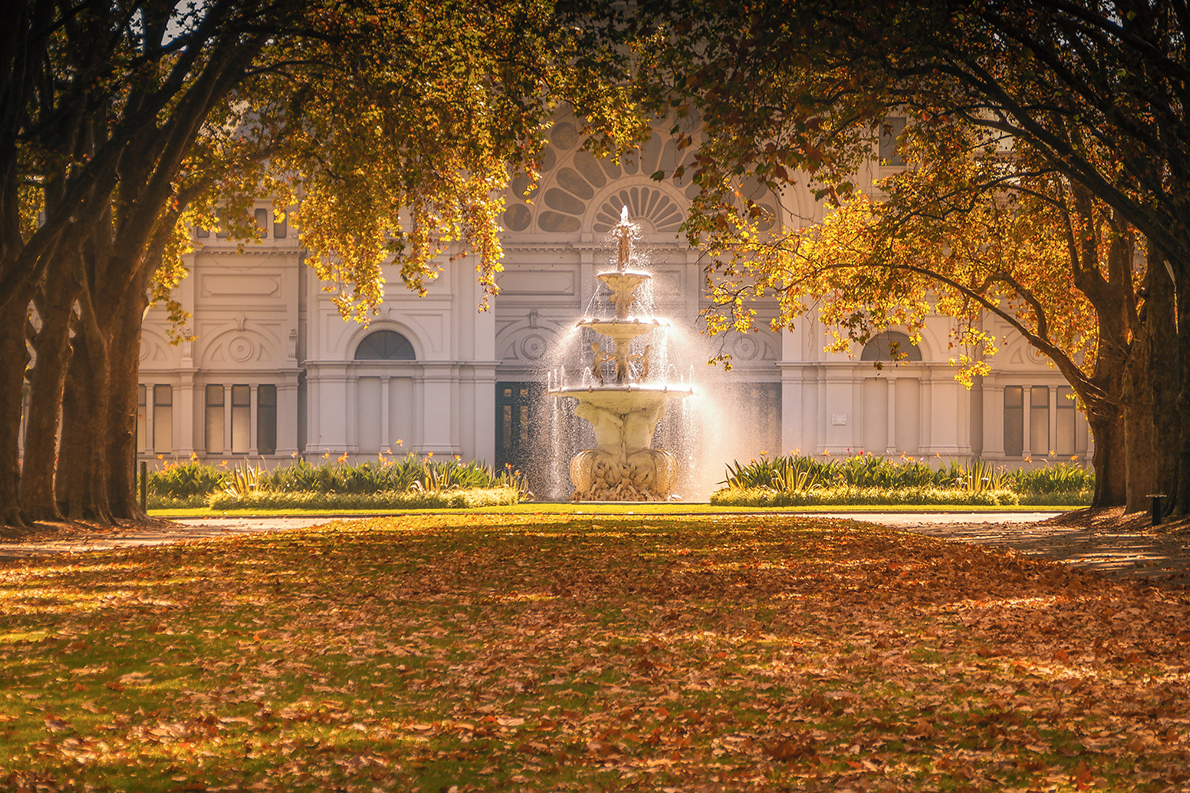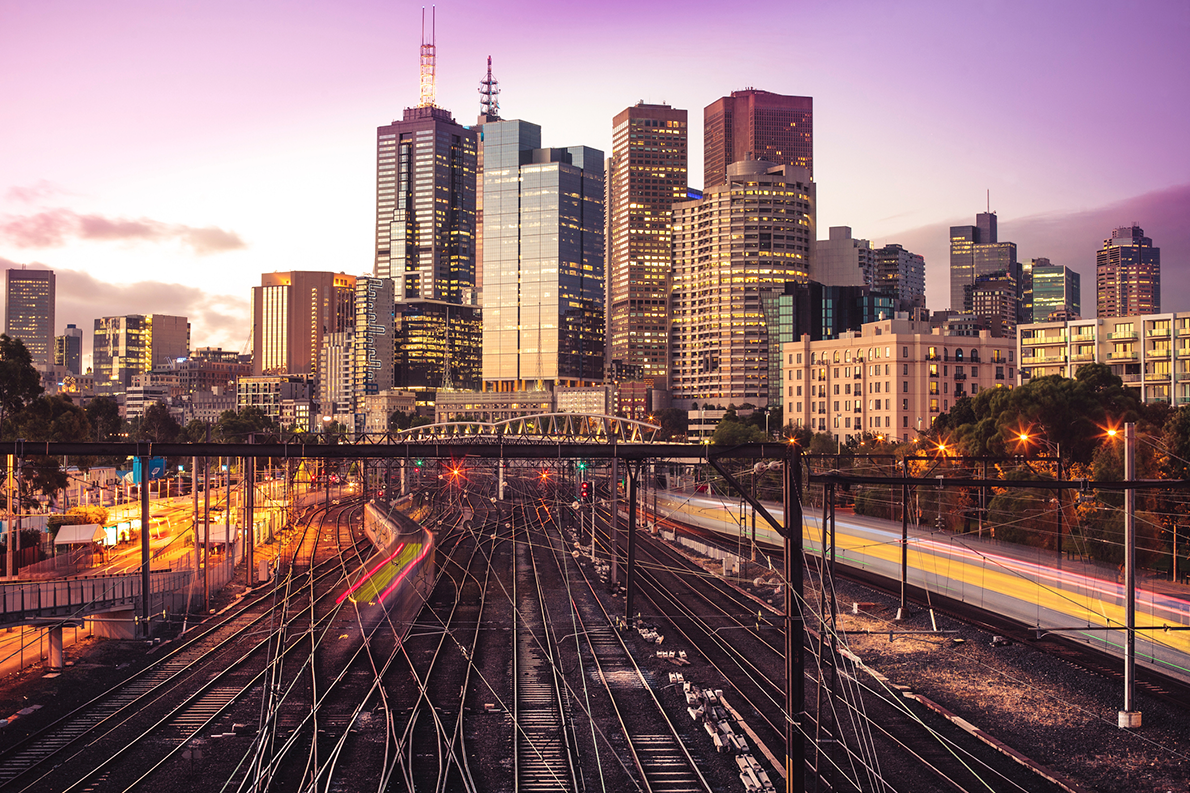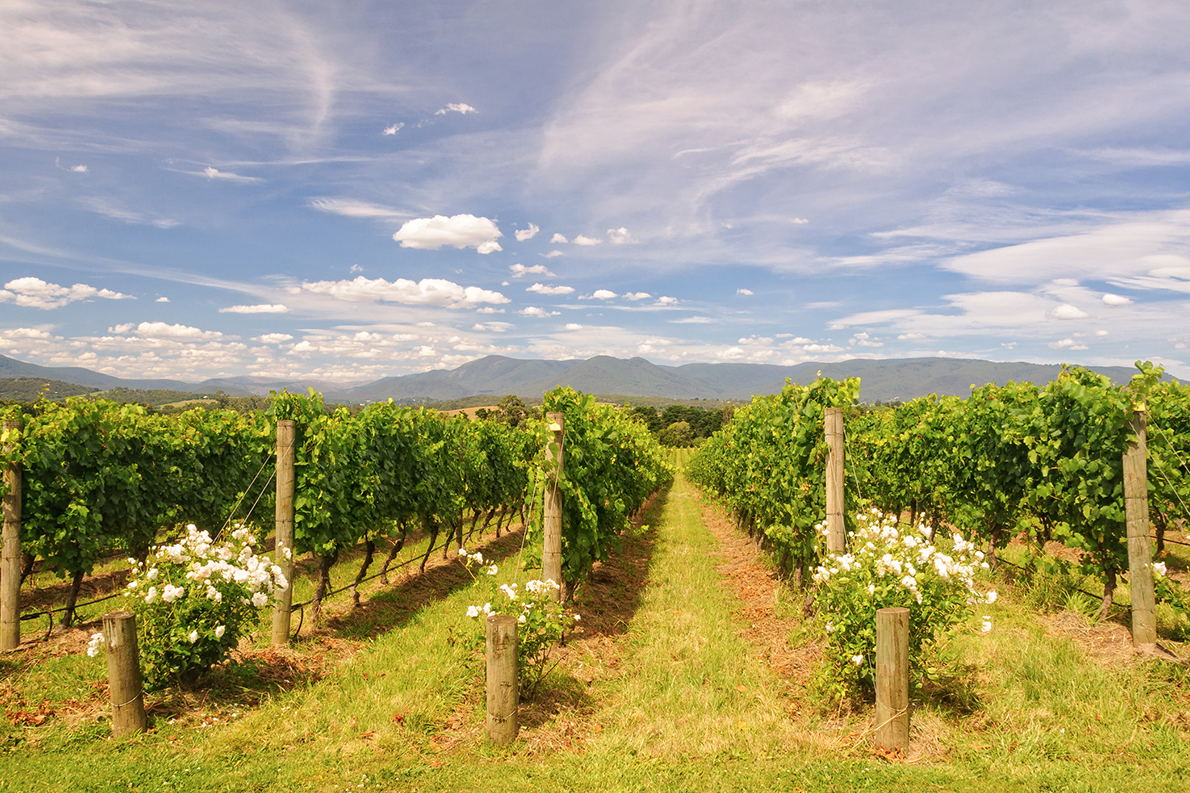When it comes to sheer liveability, few cities can stand up to Melbourne. With a mix of the modern metropolis, with thriving arts and retail cultures mixed with the easy-going pace of life characterised by wide open parks and gorgeous Victorian architecture, it’s no surprise that it’s such a popular city. However, to make sure that your acclimation to city life goes as smoothly as possible, you might benefit with a little inside info before the big move. Here’s everything you need to know about starting your life in Melbourne.
Finding a place to live
 The beautiful Hochgurtel fountain at Carlton Gardens
The beautiful Hochgurtel fountain at Carlton Gardens
With a beautiful coastline, impressive high rises, and a vibrancy that’s hard to beat, it’s easy to see why you might want to live in Melbourne. But what about where you want to live in Melbourne? From the different areas worth looking at to the prices of renting, buying, and setting up your life, we’ll help you clear things up a little.
Popular areas to live
- St. Kilda– Right next to a gorgeous beach and less than 20 minutes by car away from the CBD, St. Kilda is optimally placed for growing families. Parks, schools, and public transport is all right nearby. However, as high in demand as it is, it is not inexpensive. While buying a house costs an average of $2,177,500, apartments are significantly more affordable, costing, on average, $575,000.
- Carlton – This is one of the most bustling, vibrant areas of the city, a suburb located centrally to the city. There’s a distinct European tint to life in Carlton, with Italian and French cafés. Fitzroy is right beside it, with a glut of galleries and proximity to the University making them both a very popular place for students and young professionals. The median house price is around $1m for a house
- Seaholme – Not as close to the city centre as St. Kilda or Carlton, the bayside Seaholme is roughly half-an-hour’s drive out of the city centre but, as a slightly denser community with less geographic spread, it has excellent access to schools and local parks, while 1950s brick homes and classic architecture lend it a style loved by those who desire a slower pace of life. The median house price here is around $1,105,000.
- Wyndham Vale – While lacking the glitz and business of Carlton, Wyndham Vale is much quieter area with great parks & recreation, a simple housing suburb with good access to schools and public transport, and some excellent childcare options. At a median housing price of $500k, it could be a better fit for families and retirees with less of a budget for their home buying costs.
Renting vs buying
As an extremely popular city to live in, it should be no surprise that most of the popular areas to live in are a good deal above the national average when it comes to home-buying prices. The median house price in Melbourne, according to the latest figures from Domain, is around $809,468. According to Stockspot, Melbourne sees the second highest rate of appreciation gain in the country, just behind Sydney, while the third highest, Perth, has dropped significantly by comparison.
However, renters may be better off, based on long-term assumptions that homeowners may lose leverage in the next seven years if you believe, like some, that we’re due for another housing market crash. The median rent in Melbourne right now is around $1,121, and the average apartment size is around 994 sq. ft, with a year on year rise in prices of around 8%, based on the latest figures from Rent Café at the time of writing.
Transport

Setting up a life is one thing but you are also going to want to think about how you get around. Especially if you’re setting up a family life out in the suburbs while working in the city. Here, we’re going to look at the transport options of Melbourne, including what you want to know about owning and driving a car in the city and its public transport facilities.
Should you buy a car?
Whether or not a car is necessarily a good idea depends on where you plan on living. If you’re living in one of the outer suburbs, like Wyndham Vale or Seaholme, then it will undoubtedly help you make your way to the centre all the faster. However, in the city centre, parking can be a problem, as most apartment blocks don’t have a car park. Even inner-city suburbs like St. Kilda have excellent transport links, making cars somewhat unnecessary.
Toll roads
There are two toll roads in Melbourne, as shown by Linkt, which offer a safe and direct route through the city for drivers. Toll roads are electrically tolled in Melbourne, meaning there’s no need to stop a pay at a booth. You pay after the fact, effectively correcting your toll road balance. How much you pay depends on factors like the vehicle class that you’re driving, so it’s important to do some research and to open an account on the Linkt site mentioned above.
Public transport
Getting around the capital entirely car-free is most certainly possible, with buses, trains, and trams, the latter of the three being the most extensive network available. All public transport is best used a Myki card, a reusable ticket that’s bought and topped up at the train stations and some tram stops and bus interchanges.
- Trams – Simply tap on your Myki card when boarding and tap off where you want. They’re everywhere in the city centre and reach most of the popular inner-city suburbs, as well. There is also a free tram zone around the city centre. You can look at the signage at tram stops to identify the boundary of the zone or check out this map.
- Trains – Cost depends on where you travel, your ticket type and whether you are eligible for a discount. You can check the prices here. Better suited for trips in and out of the outer suburbs or a quicker trek through a larger portion of the city (depending on where you’re going). As with every city, they are rammed at peak times, however.
- Buses – Like everything else, they cost $4.30 per trip, and are best for getting closer to your exact destination since there are bus stops everywhere, including some areas that trams and trains don’t reach, like the retail centre of Chadstone.
Weather
With a temperate ocean climate, the Melbourne weather is known for changeability more than anything. Different areas of Melbourne are known to have different types of weather.
Temperatures never get much less than mild, with lows of around 13 Celsius in June and July, while the average height of 26 Celsius give plenty of reasons to visit the city’s many beaches in the summer. However, it is known for some temperature swings, with air masses coming in from both the Antarctic seas and deserts to the north.
All the same, rainfall isn’t all that abundant, with no dry seasons, with around 2.8 inches of rain at its rainiest in November, and 1.8 inches on average during the driest times in February. Wind, however, is quite frequent, with westerlies blowing in through most of the year. This makes is an excellent city for surfing but isn’t too overwhelming.
Culture
As a true metropolis, there is a lot of culture to enjoy in Melbourne. It’s an incredibly multicultural city. Influences from European culture are everywhere, from the dominant presence of British Isles fixtures, but also a lot of French and Italian influence, especially in restaurants, bars, and cafes. Meanwhile, the city has welcomed lots of immigrants, especially from China and the Americas, making it one of the most multicultural cities in the entire world, without a doubt.
Melbourne also has a huge sports scene, often being labelled as the sports capital of Australia. Some of the major sporting events taking place in the city include the Melbourne Spring Racing Carnival, the Australian Formula One Grand Prix, the Australian Open Tennis Tournament, the Boxing Day Test match, and the Australian leg of the MotoGP. Melbourne also plenty of AFL teams, two rugby teams, a basketball team, and two netball teams. If you’re sports mad, you will find plenty to keep yourself busy.
The city is furthermore known as the arts and theatre heart of the country, with several world-renowned opera and theatre venues and institutions. These include the Australian Ballet School, the Victorian Arts Centre, the Royal Melbourne Philharmonic, the Arts Centre Melbourne, and much more. From the highbrow to the grassroots, there are communities and venues for anyone to enjoy, not to mention a slew of museums, visual arts galleries, events, festivals, live music, literary talks, and much, much more.
Outside of the galleries, venues, museums, and annual events, there’s plenty of entertainment to be found. From swimming or sailing in Port Phillip Bay to enjoy the cafes, beer stops, and street art of the Laneways, there is always something to do in Melbourne.
Shopping
Melbourne has a huge retail culture, with multiple different neighbourhoods known for catering to buyers of all tastes. In general, most shops stay open until around 9pm on Thursdays and Fridays, closing slightly earlier throughout the rest of the week. The Chadstone Shopping Centre is the biggest of them all, with something for everyone. Meanwhile, the Melbourne Emporium by Little Bourke is the place to find a host of local and international designer brands. Meanwhile, those with a more eclectic style can find all kinds of boutiques and vintage stores in Fitzroy, particularly down Brunswick Street.
There are also plenty of supermarkets to be found all throughout the city. The vast majority of these are either open 24/7 or will stay open until midnight every night of the week, so you’re never stuck waiting too long to get that much needed bottle of milk.
Food/bar scene
As a major culinary hotspot, Melbourne has more bars, pubs, cafes, clubs, and restaurants than you can hope to visit in a lifetime. The city is also known for having some truly great coffee, with famous names like Brunetti, Plantation Coffee, and Poolhouse Coffee being some of the most popular haunts in the entire city. Cuisines expand across the whole range, with some must-try dishes including the chicken schnitty at Hector’s Deli in Richmond, the Honolulu Tuna Pizza at Sash Japanese, and the Mi Goreng Fried Chicken at Phat Chicks Fried Chicken.
Day trips
 The picturesque Yarra Valley
The picturesque Yarra Valley
To put it simply, there’s enough to keep you busy in Melbourne for the rest of your life so if you’re looking to be entertained, you never have to leave. However, if you, like many, want the occasional break from city life, there are some excellent destinations right on your doorstep. Here are a few of the key places to visit.
- Philip Island – Just ninety minutes off the coast of the city, this picturesque island is full of rugged coastline to explore, wildlife attractions (including marches of hundreds of little penguins and whale watching), and family attractions. It’s also home to the Philip Island Grand Prix Circuit, ever a centre of motorsports adrenaline.
- Great Ocean Road – One of the greatest road trips in the country, perhaps the entire world, it’s home the 12 Apostles (erosion has taken 4 so only 8 left standing), volcanic plains, and a wide host of National Parks. Plenty of great places to hike, bike, camp, surf, and lots of little stops to eat and pick up souvenirs on the way.
- Wine regions – The Yarra Valley and Pyranese have some of the most lush, verdant hills you’ll find in the country, with lots of places to stop, take a drop of wine, enjoy a picnic, and enjoy a meal out with the family
Ready to make your move to Melbourne?
When moving to Melbourne, or any new community, preparation is key. A professional Melbourne removalists like Chess Moving can ensure that moving day goes as smoothly as possible. No matter when, no matter what you have to bring, we can ensure that you have the space you need, the tools you need, and the help you need to make the move as stress-free as possible. All you need to do is get in touch, put a plan together with us, and you spend more time getting excited about your new home in Melbourne, rather than worrying about how you get there.